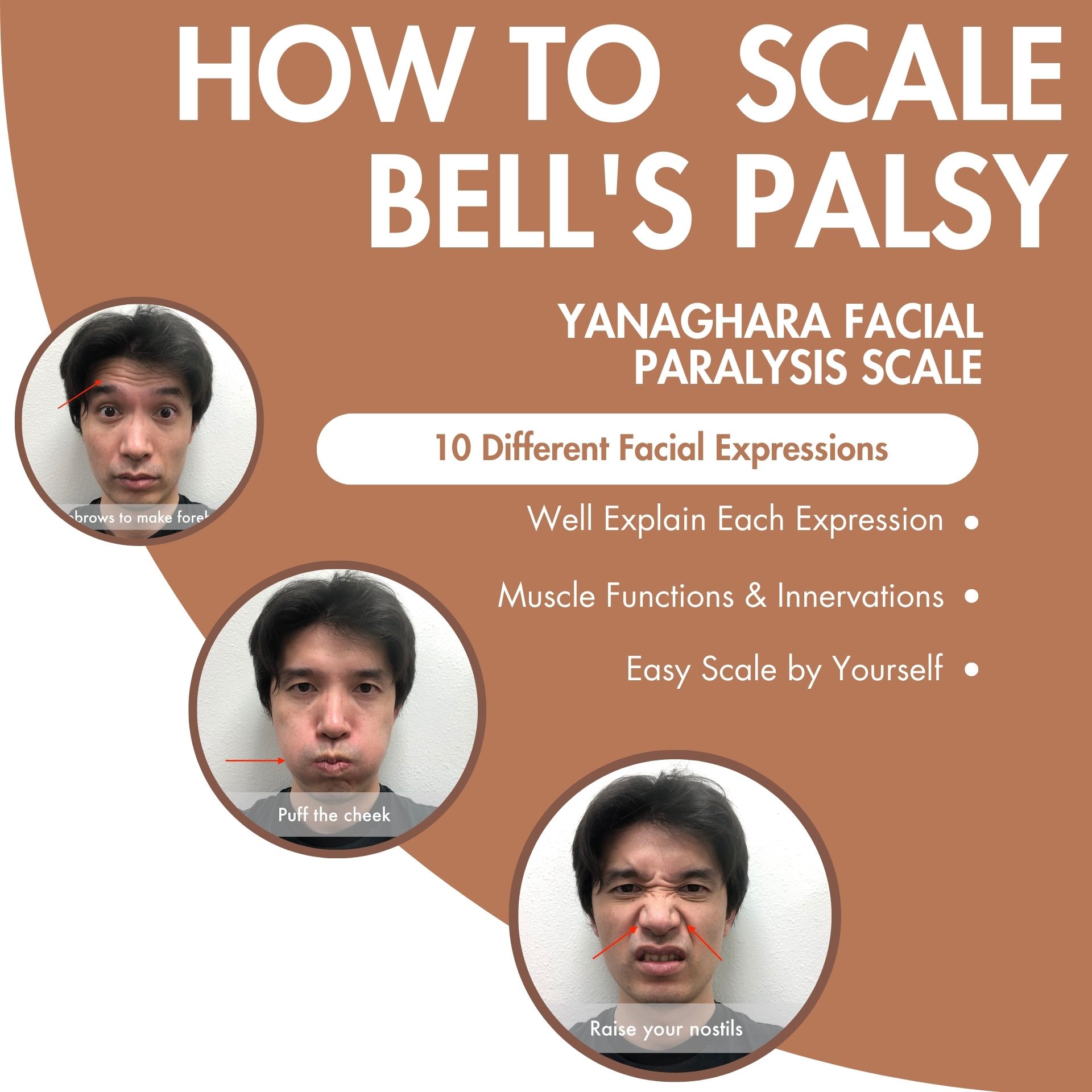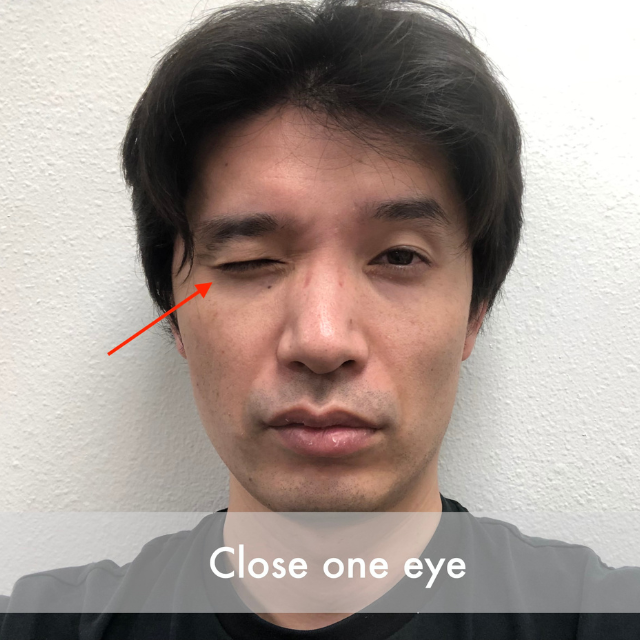When a Storm is Brewing: A Plano Resident’s Guide to Barometric Pressure Migraines
Living in Plano, you know the weather changes. Sudden storms and fronts cause barometric pressure migraines. Get help for the headaches and throbbing pain.

December 9, 2025
Bell’s palsy is a condition that causes paralysis on one side of the face resulting in drooping and inability to move the mouth, close the eye, raise the eyebrow, or puff the cheeks. Unfortunately, the cause of this condition is still unknown. It can be frightening to experience as it may feel like it will never go away. However, a scale is available to help you assess the severity of your Bell’s palsy.
We understand this can be a lot of information and overwhelming: if you are looking for more support and answers, set up a free consultation with our Bell’s Palsy Specialist, Satoru Ozawa. Share your story, get your questions answered, and learn how you can set yourself up for tremendous success in achieving a healthy life.
At hariQ acupuncture & herbs clinic, we use the Yanagihara scale to assess facial paralysis. This scale involves evaluating 10 different facial expressions and assigning a score of 0, 2, or 4 depending on the movement level in each section. A score of 0 is given if the expression cannot be performed, 2 if it can be performed partially, and 4 if it can be performed entirely. If the total score is over 20, Bell’s palsy is considered minor. If it’s less than 18 but more than 10, it’s moderate, and if it’s less than 8, it’s considered severe.

In the first section, you simply need to compare your regular face to your healthy side. Look for any signs of drooping, lack of blinking in one eye, or absence of wrinkles on the forehead.

In the upcoming section, you will test your ability to raise both eyebrows evenly and create wrinkles on your forehead. This will help determine if you can properly control your frontalis muscle.

The Frontalis muscle is located on the forehead and attaches your eyebrows to the front of the skull, and the facial nerve temporal branch innervates it. It may indicate damage or entrapment of the facial nerve’s temporal branch if you cannot move this muscle.

In the next section, please close your eyes lightly and ensure that they are able to close completely. This will help you check the strength of your Orbicularis Oculi muscle through your facial expression.

The muscle responsible for closing the eye is located around the eye and is innervated by the facial nerve’s zygomatic branch.

In this next step, please firmly close your eyes and compare the amount of closure to your healthy eye. This will test the functionality of your Obicularis Oris muscle, as well as your Corrugator and Procerus muscles.

The corrugator muscle is located on the inner side of your eyebrow and is responsible for moving it inward.

The Procerus muscle is located between the eyebrows and is responsible for pulling them down.

The next one is to close only one eye, and this is one of the most difficult ones to be able to do. A lot of my clients have difficulty doing this section, so please do not encourage them if you can’t do it because sometimes, even if you are healthy, you won’t be able to close only one eye.

In the next section, we will check if your Lavitor Labii muscle is functioning properly by raising your nostrils.

The Lavator Labii muscle is responsible for raising the nostrils and is attached from the nostrils to the corner of the mouth. This muscle is used when making a frown face.

In this section, you will showcase your teeth. The muscles involved in this movement are Depressor Labii Inferioris and Zygomaticus, which work together to perform the function.

The Depressor Labii Inferioris muscle is connected to the corner of your mouth and allows you to open your mouth by moving downwards. When this muscle is used correctly, your lower teeth will become visible.

The zygomaticus muscle is located at the corner of your mouth and connects to your cheek. Its function is to pull your upper lip upward, allowing you to show your upper teeth when you smile.

To make the next facial expression, try puffing out your cheeks. To do this, use the Orbicularis Oris muscle around your mouth to keep your mouth closed and prevent air from escaping. If you’re unable to do this motion, air will escape from your mouth or your lips will shift to the left or right.

The Orbicularis Oris is a round muscle that surrounds the mouth and is responsible for closing it, as well as controlling the shape and movement of the lips. The facial nerve buccal branch is responsible for providing innervation to this muscle.

To achieve a pouting expression, you need to use the Buccinator and Mantalis muscles. Failure to do so may cause your lips to shift to the left or right.

The buccinator muscle is found in the cheek and when it tightens, it pushes the cheeks against the teeth.

The mentalis muscle is situated on the chin and allows you to raise your chin and lower lip, enabling you to pout your lips.

In order to move the corner of your mouth down, you will need to use your Depressor Anguli Oris and Platysma muscles. These muscles are connected to the facial nerve cervical branch and allow you to control the downward movement of your mouth.

The Depressor Anguli Oris is a small muscle located at the corner of the mouth that aids in outward and downward movement of the mouth.

The platysma muscle is a broad and flat muscle that connects from the corner of the mouth to the neck and collar bones. When it contracts, it pulls the skin of the neck upward and lowers the jaw, chin, and mouth. Because it is situated near the surface, it is easily visible when in use.
Before attempting to treat your Bell’s palsy, it is crucial that you receive a diagnosis from a qualified healthcare professional. This is because other conditions, such as stroke or Ramsey Hunt syndrome, may present similar symptoms, and misdiagnosis could have life-threatening consequences. Once you have been properly diagnosed with Bell’s palsy, you can assess the severity of your condition with the Yanagihara scale and decide on an appropriate treatment plan. If progress is slow, you may want to consider alternative treatments such as acupuncture, which has been shown to be beneficial for many Bell’s palsy patients.
We'll be happy to answer your questions.
Yes. Acupuncture is very effective for Bell’s Palsy. Please read Collin’s Success Story for Bell’s Palsy. During Collin’s initial acupuncture session, we examined his face and muscle weakness in his face. He could not close his left eye completely, and his mouth kept open. On top of this, he had a throbbing pain around her neck. We agreed on a treatment course of Acupuncture once a week for three months.
The treatments focused on reducing the inflammation and swelling and restoring movement in his face. Acupuncture has been shown in many studies to be incredibly practical in reducing pain and inflammation due to its ability to stimulate the body to release its natural painkillers.
A week after his first acupuncture treatment, Collin was showing promising progress. His eye was closed by 70%, and he could move his mouth. By the end of the 3rd week, the neck pain was almost gone, and he could close his eye by 80%. Most significant, however, was that he could talk without any difficulty.
Within three months, Collin’s face was back to normal. He was nearly 90% recovered regarding facial mobility and no longer needed treatments.
Now, he can sleep without using an eye patch and talk with his wife and friends as much as he wants.
As a general rule of thumb, the sooner one receives treatment for Bell’s palsy, the better the prognosis. However, even after you have passed six months after the onset, you can still fully recover from facial paralysis. A significant part of Collin’s success was his consistently receiving treatments for three months.
Some patients come for Bell’s palsy treatment months or even years after the initial onset. These chronic cases are often more complex and take a much greater length of time to achieve results. Even then, recovery is not guaranteed.
Regarding the frequency of treatments, Acupuncture follows a simple rule. Acute and relatively new conditions are most effectively treated with more frequent visits. In contrast, chronic and old conditions can benefit from more widespread treatments. In other words, if you just had an onset of Bell’s palsy, you will probably be prescribed 2-3 treatments per week in order to get the most effective results. Chronic cases will generally come in only once a week.
If you or a loved one was diagnosed with Bell’s Palsy and want to learn more about Acupuncture and whether it’s appropriate for your case, send us a message through our contact page.
We understand this can be a lot of information and overwhelming: if you are looking for more support and answers, set up a free consultation with our Bell’s Palsy Specialist, Satoru Ozawa. Share your story, get your questions answered, and learn how you can set yourself up for tremendous success in achieving a healthy life.
The following blogs discuss natural remedies, acupuncture, Chinese medicine, Chinese herbs, and tips for maintaining good health.
Living in Plano, you know the weather changes. Sudden storms and fronts cause barometric pressure migraines. Get help for the headaches and throbbing pain.
As a practitioner, my focus is on giving you the best tips for your health. But today, I want to share one that is at the heart...
Vestibular migraine: episodes of vertigo, dizziness, and imbalance without head pain. A neurological condition, not a simple balance issue.

Satoru Ozawa, L.Ac, ATC
hariQ acupuncture & herbs
Licensed acupuncturist, Certified Athletic Trainer and Chinese herbal specialist. With his 10 years of experience in Oriental Medicine, he will recommend the best natural Remedies, including Acupuncture, Chinese herbs, and health tips to relieve your suffering.